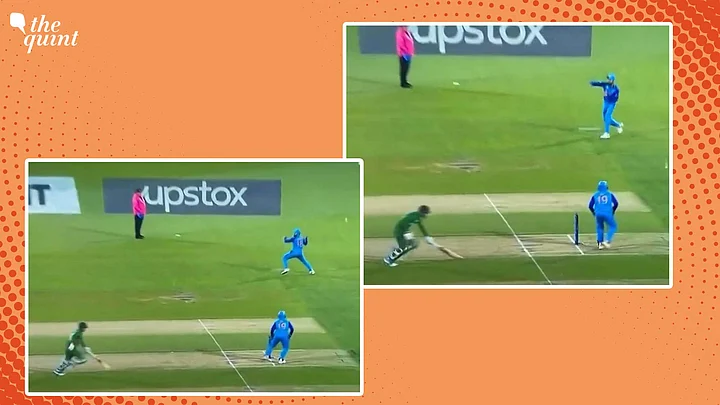As India defeated Bangladesh in their fourth ICC Men’s T20 World Cup 2022 tie, Virat Kohli made the headlines for a couple of reasons. Firstly, he scored his third half-century in the competition. The second reason, however, involves controversy, as he has been accused of 'fake fielding.'
When did the incident happen?
India and Bangladesh met at the Adelaide Oval on Wednesday, 2nd November. Chasing a target of 185 runs posted by the Indian team, Bangladesh had a good start, scoring 60 runs in the powerplay without the loss of any wicket.
The second delivery of the seventh over is the focal point of the controversy. Litton Das played the ball towards Arshdeep Singh at sweeper cover, and completed two runs comfortably. However, as Arshdeep threw the ball to his wicketkeeper, Dinesh Karthik, Kohli made a gesture that can be considered ‘fake fielding.’
What did Kohli do?
Arshdeep’s throw from sweeper cover went straight to Karthik, but Kohli, standing at point, gestured to have intercepted the ball and faked a throw at the non-striker's end.
The incident was caught in the replays, and has since made rounds on social media.
Did Bangladesh raise the issue?
They did. Nurul Hasan Sohan, Bangladesh’s wicketkeeper-batter who took the game to the very last delivery, said after the match “There was also a fake throw. It could have been a five-run penalty. That also could have gone our way, but unfortunately, even that didn't materialise.”
What does the rulebook say?
This particular topic is covered in Law 41.5 of Marylebone Cricket Club (MCC’s) cricket laws, which deals with ‘deliberate distraction, deception or obstruction of batter.'
The law says if that a fielder has willfully attempted to distract, deceive or obstruct a batter, the fielding team could be duly penalised by the umpires.
“It is unfair for any fielder wilfully to attempt, by word or action, to distract, deceive or obstruct either batter after the striker has received the ball,” the law states.
Regarding the penalty, the rulebook explains “The bowler's end umpire shall Signal No ball or Wide to the scorers, if applicable, award 5 Penalty runs to the batting side, inform the captain of the fielding side of the reason for this action and as soon as practicable inform the captain of the batting side.”
So, why were India not penalised?
Simply because no one noticed it. It is only after the replays were shown that the incident became a talking point. Neither the Bangladeshi openers raised the issue during the match, nor the two on-field umpires, Marais Erasmus and Chris Brown, picked up Kohli’s shenanigans.
MCC’s law also states that for a fake fielding attempt to be penalised, either of the two umpires must consider it as an attempt to distract or deceive the batter.
“It is for either one of the umpires to decide whether any distraction, deception or obstruction is wilful or not. If either umpire considers that a fielder has caused or attempted to cause such a distraction, deception or obstruction, he/she shall immediately call and signal Dead ball and inform the other umpire of the reason for the call,” the law explains.
Are there any previous instances of fake fielding?
Plenty. A very famous fake fielding incident involves Kumar Sangakkara, where the former Sri Lankan captain gestured to run Pakistani batter Ahmed Shehzad out, though the ball had not even reached his gloves.
Sangakkara was not penalised, simply because the aforementioned rule was incorporated in cricket’s laws only a few years ago.
Fielding at cover, the batter put in a dive to prevent a single, but the ball went past him. Despite that, Labuschagne gestured to have picked the ball and faked a throw, attempting to deceive the batter. After consultation with the leg umpire, the umpire at the bowler’s end signalled five penalty runs.
(At The Quint, we question everything. Play an active role in shaping our journalism by becoming a member today.)
